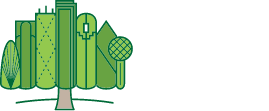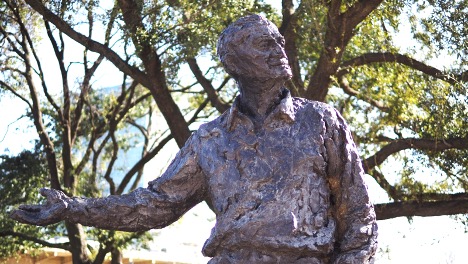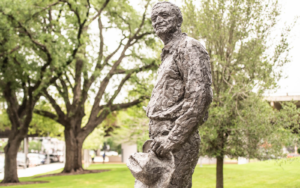In 2022 Downtown Dallas Parks Conservancy partnered with the Office of Arts and Culture to repair and restore Robert Berks’ bronze statue of John W. Carpenter at Carpenter Park. Robert Berks (1922-2011) was an American portrait artist known for his impressionist style of sculpture. His most famous works include a bust of former President John F. Kennedy and the monumental Albert Einstein Memorial statue in Washington, D.C. Berks’ statue of Carpenter was placed in the original park, which was dedicated in 1981 as John W. Carpenter Plaza.
Local art conservator Michael VanEnter oversaw the necessary repairs of the artwork, following an accident that left significant damage to the sculpture and surrounding park. Additionally, DDPC installed bollards along the corner of Live Oak and Pearl Street to encourage a safer environment for pedestrians. The statue has been meticulously restored by an allocation from DDPC’s permanent endowment and was carefully reinstalled at the entrance to Carpenter Park this month.
Interested in learning more about John W. Carpenter? Continue reading below for a glimpse into the life of this influential figure in Texas history.
Early Texas Industry
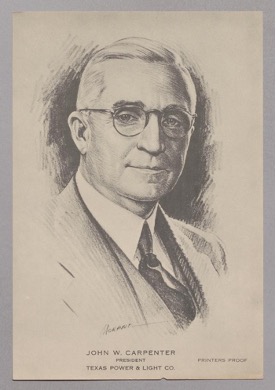
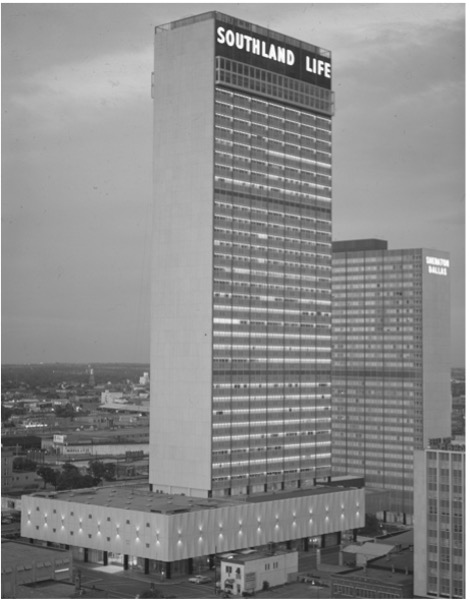
John W. Carpenter 1881-1959
Born to the soil in the nineteenth century,
He dedicated his life, his hopes, his energies
To the new era which lay before him.
His life represented the bridge of transformation
From the early frontier to the southwest
To a modern industrial Texas.
During John W. Carpenter’s lifetime, the industrial landscape in Texas underwent many dramatic transformations. Born on a farm in Corsicana, Texas in 1881, Carpenter was a dedicated conservationist, esteemed utility and insurance executive, local civic leader, and lifelong rancher, among various other titles. He oversaw and organized dozens of major companies in the Southwest, but had a humble beginning as a teenage laborer at Corsicana Gas and Electric Company. In 1900 he advanced to line man, and later plant engineer, bookkeeper, collector, and superintendent. Seven years later he would become the president and general manager.
In 1918, Carpenter arrived in Dallas to assume the role of vice president and general manager at Dallas Power and Light Company. The next year, he accepted the same position at Texas Power & Light. Rural electrification was of keen interest to him throughout these years, granted most rural farms in Texas had no access to power or electricity. He served as president of the Dallas Railway and Terminal Company, where he inaugurated the first public transportation across the Trinity River with the construction of a streetcar viaduct connecting Oak Cliff to Dallas.
Another pivotal role Carpenter held was in establishing Lone Star Steel in 1942, serving as its founder and first president in. The company would go on to significantly contribute to the development of East Texas.
In 1930 Carpenter organized the Texas Security Life Insurance Company, which later became Southland Life Insurance Company, and grew into the fifteenth largest publicly-owned life insurance company in the United States. The company’s success spurred the construction of the tallest building West of the Mississippi at the time: the Southland Center in downtown Dallas.
Environmental Accomplishments
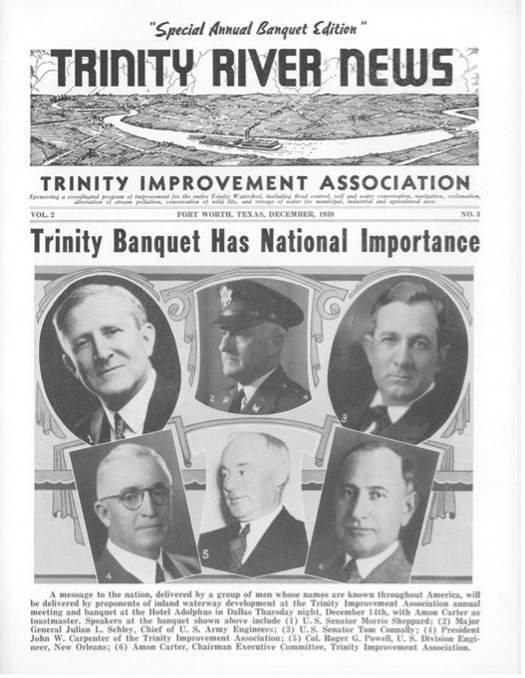
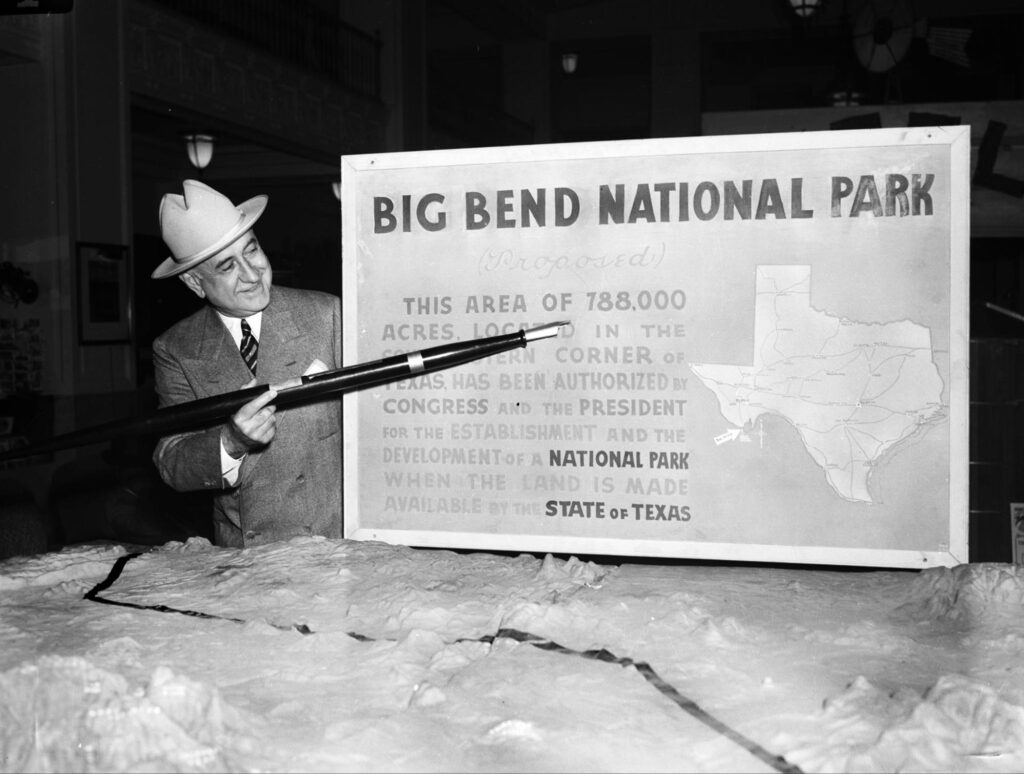
Deeply committed to conservation and reforestation, Carpenter planted over two million pine seedlings across his family farms in East Texas. His love of Texas landscapes included the local banks of the Trinity River. In 1928 he organized the Trinity Improvement Association, which aimed to improve the entire Trinity Watershed with projects ranging from flood control and navigation to conservation of wildlife and storage of water. He was the first president of the association and remained so until his death in 1959. T.I.A’s accomplishments included performing vital surveys and studies, construction of multiple new reservoirs, improvements to floodplains in Dallas and Fort Worth, and preliminary canalization work on the lower Trinity River.
Carpenter also played a significant role in establishing Texas’ first national park, Big Bend National Park, serving as a member of the committee that helped bring it to fruition. He later became a director for both the Big Bend National Park Association and the Big Bend Trail Association. He served on the boards of the Texas Research Foundation and the Texas Forestry Association.
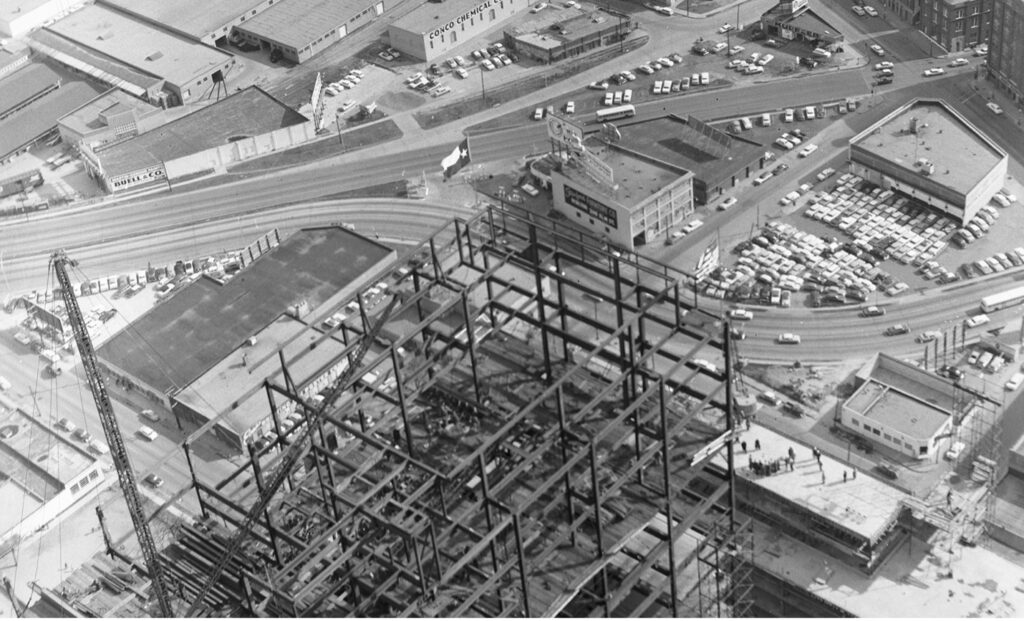
Other civic interests that Carpenter supported throughout his life included the State Fair of Texas and the Texas Centennial Exposition in 1936. He served as a trustee and board member of Baylor University and helped establish Texas Technological College. He was a member of both the Dallas Historical Society and the Texas State Historical Association. During his tenure as president of the Dallas Chamber of Commerce, he played a crucial role in facilitating the acquisition of the Statler Hilton.
While the many accomplishments mentioned above are impressive, they really only begin to scratch the surface of Carpenter’s endless advocacy for various local and statewide initiatives. Primary sources consulted for this post are highlighted below, and provide many opportunities for further research. Of particular significance are the John W. Carpenter Papers at the University of Texas at Arlington Libraries, donated in 1996 by his son Ben H. Carpenter.
Sources & Notes
Photograph of Robert Berks’ bronze statue of John W. Carpenter by David Woo.
Portrait sketch of John W. Carpenter illustrated by John Moranz, University of North Texas Libraries, The Portal to Texas History; crediting Rosenberg Library.
Photograph of the Southland Life Center, from the Squire Haskins Photography, Inc. Collection located at the University of Texas at Arlington Libraries. Browse more of the collection online for a historic view into the commercial and industrial growth of Dallas following World War II.
Cover page of the Trinity River News, made available by the University of Texas at Arlington Libraries. Original image is a part of the John W. Carpenter Papers, which may be accessed online here.
Photograph of a Big Bend National Park display. The man gesturing towards the sign is Amon G. Carter of Fort Worth, Texas. This image is part of the Fort Worth Star-Telegram Collection, also made available by the University of Texas at Arlington Libraries.
Aerial photograph of the Southland Center under construction was retrieved from the Squire Haskins Photography, Inc. Collection at the University of Texas at Arlington Libraries. Fun fact: the future location of Carpenter Park is partially visible in the background!
Further reading can be found at the Texas State Historical Association John W. Carpenter page, and the John W. Carpenter Papers finding aid.

